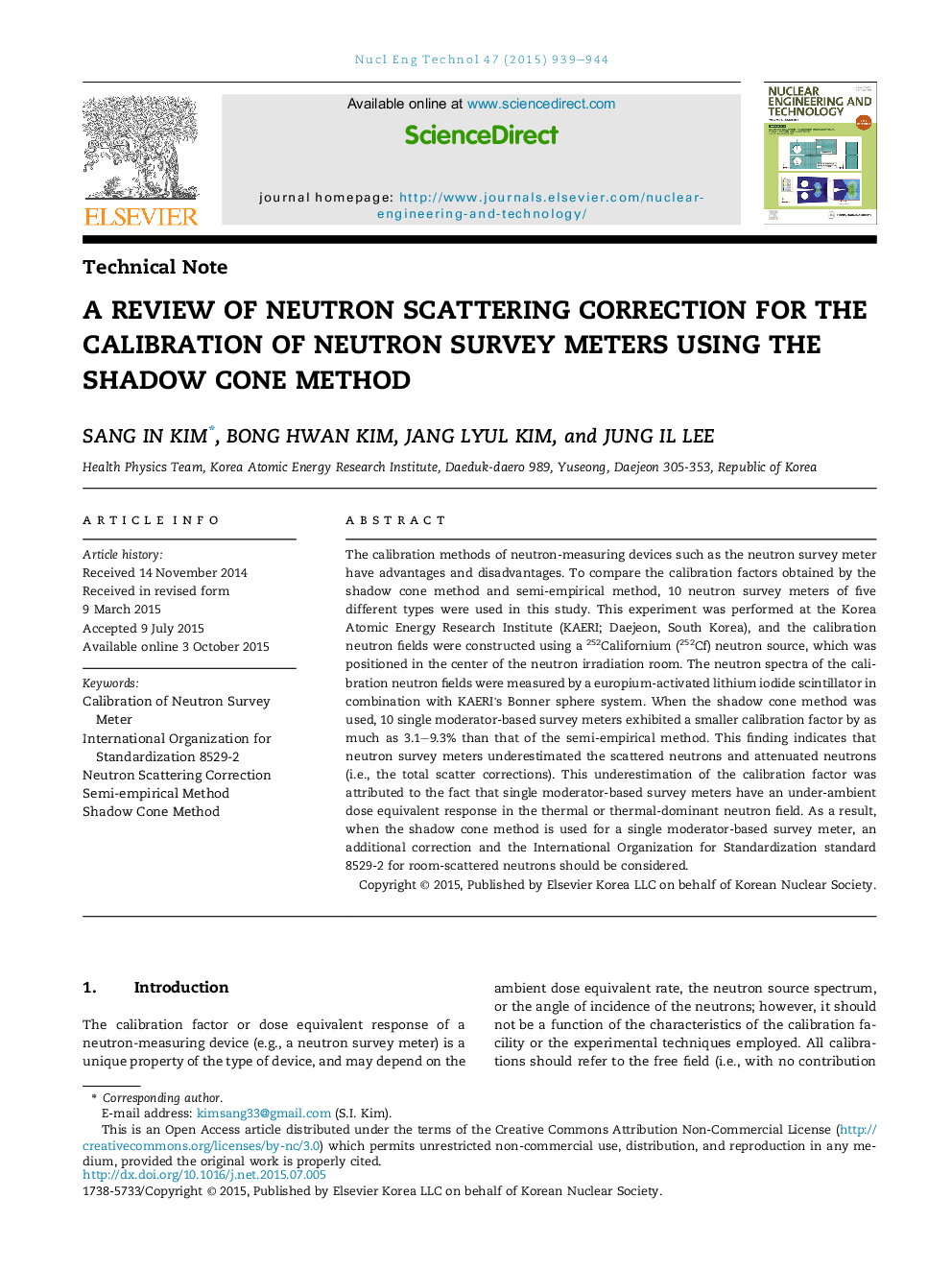| Article ID | Journal | Published Year | Pages | File Type |
|---|---|---|---|---|
| 1740074 | Nuclear Engineering and Technology | 2015 | 6 Pages |
The calibration methods of neutron-measuring devices such as the neutron survey meter have advantages and disadvantages. To compare the calibration factors obtained by the shadow cone method and semi-empirical method, 10 neutron survey meters of five different types were used in this study. This experiment was performed at the Korea Atomic Energy Research Institute (KAERI; Daejeon, South Korea), and the calibration neutron fields were constructed using a 252Californium (252Cf) neutron source, which was positioned in the center of the neutron irradiation room. The neutron spectra of the calibration neutron fields were measured by a europium-activated lithium iodide scintillator in combination with KAERI's Bonner sphere system. When the shadow cone method was used, 10 single moderator-based survey meters exhibited a smaller calibration factor by as much as 3.1–9.3% than that of the semi-empirical method. This finding indicates that neutron survey meters underestimated the scattered neutrons and attenuated neutrons (i.e., the total scatter corrections). This underestimation of the calibration factor was attributed to the fact that single moderator-based survey meters have an under-ambient dose equivalent response in the thermal or thermal-dominant neutron field. As a result, when the shadow cone method is used for a single moderator-based survey meter, an additional correction and the International Organization for Standardization standard 8529-2 for room-scattered neutrons should be considered.
